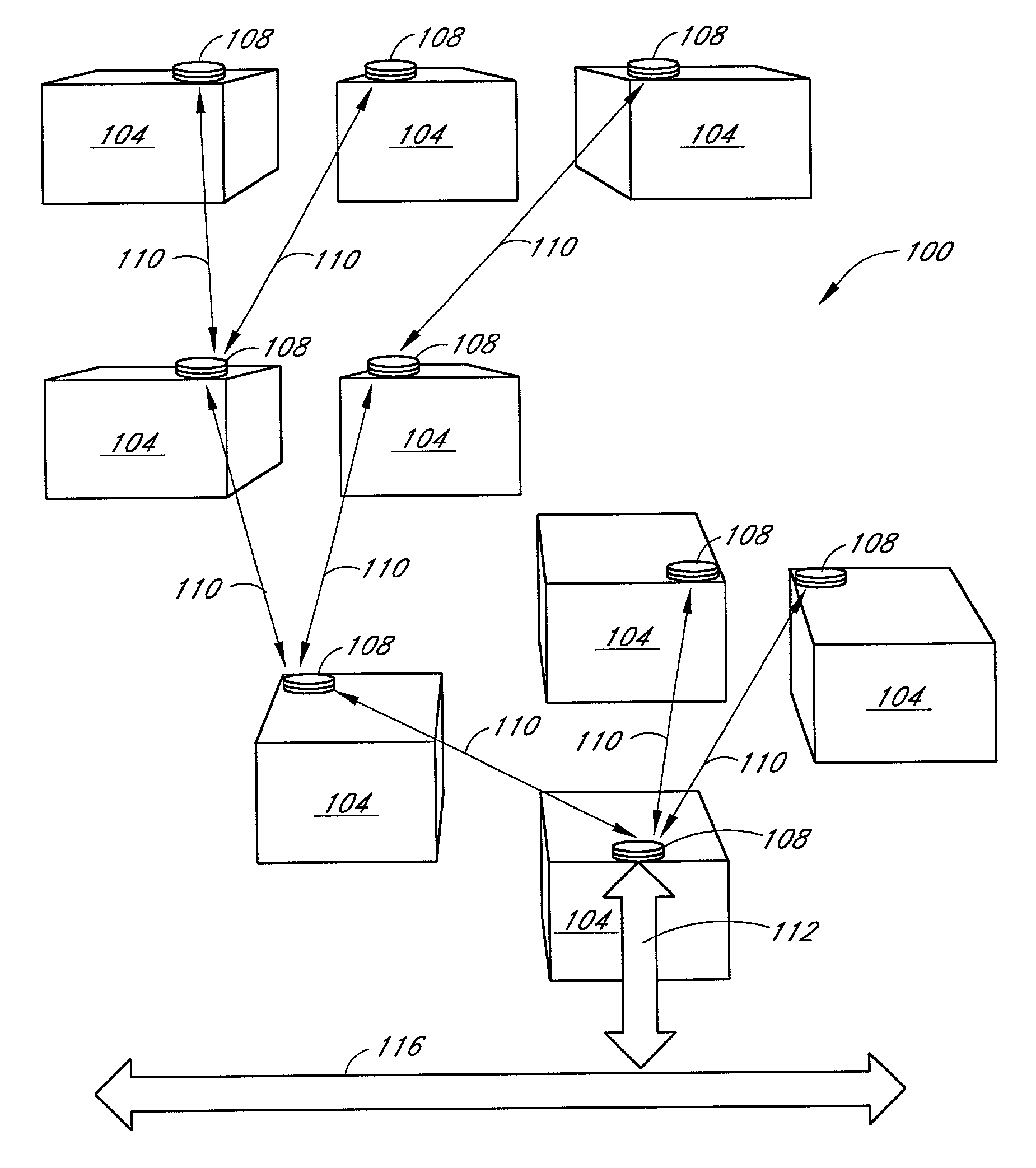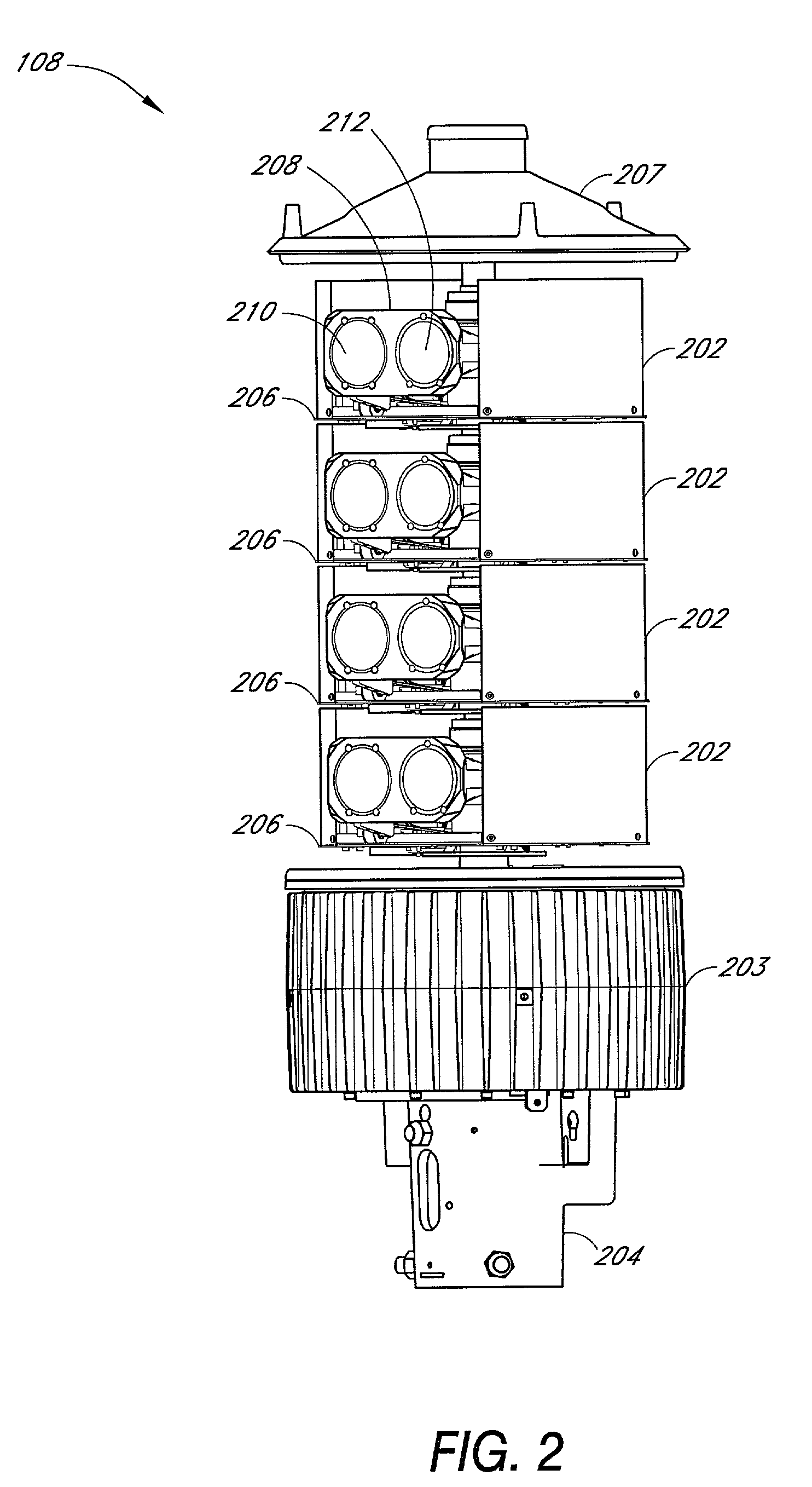Optical transceiver design and mechanical features
a technology of optical transceivers and mechanical features, applied in electromagnetic transmission, electrical equipment, transmission, etc., can solve the problems of inability to interface to backbone networks, high initial cost of methods, and inability to meet the needs of customers,
- Summary
- Abstract
- Description
- Claims
- Application Information
AI Technical Summary
Benefits of technology
Problems solved by technology
Method used
Image
Examples
Embodiment Construction
[0030]The following presents a detailed description of embodiments of the present invention. However, the invention can be embodied in a multitude of different ways as defined and covered by the claims.
[0031]FIG. 1 is a diagram illustrating an example communication network 100. The communication network 100 can include a plurality of nodes 108, interconnected by communication links 110. The network nodes 108 are disposed on facilities 104. Although only one node 108 is provided per facility in the example illustrated in FIG. 1, more than one node 108 can be provided at one or more of the facilities 104, depending on the communication requirements, and also, perhaps, depending on the particular facility.
[0032]Facilities 104 can be buildings, towers, or other structures, premises, or locations. Facilities 104 can, for example, be homes or offices to which it is desirable to interface one or more backbone networks of one or more common carriers or service providers. In this example emb...
PUM
 Login to View More
Login to View More Abstract
Description
Claims
Application Information
 Login to View More
Login to View More - R&D
- Intellectual Property
- Life Sciences
- Materials
- Tech Scout
- Unparalleled Data Quality
- Higher Quality Content
- 60% Fewer Hallucinations
Browse by: Latest US Patents, China's latest patents, Technical Efficacy Thesaurus, Application Domain, Technology Topic, Popular Technical Reports.
© 2025 PatSnap. All rights reserved.Legal|Privacy policy|Modern Slavery Act Transparency Statement|Sitemap|About US| Contact US: help@patsnap.com



